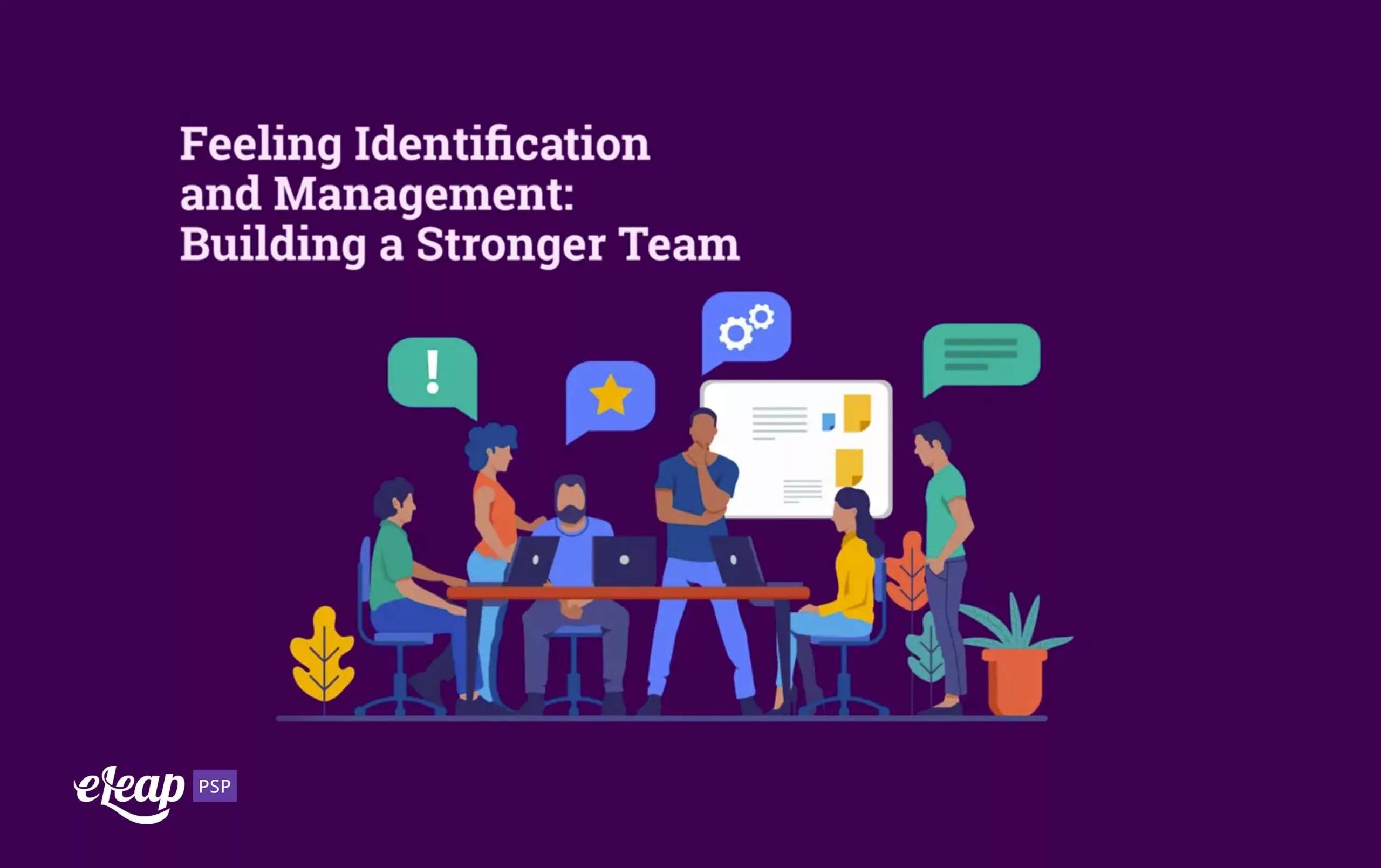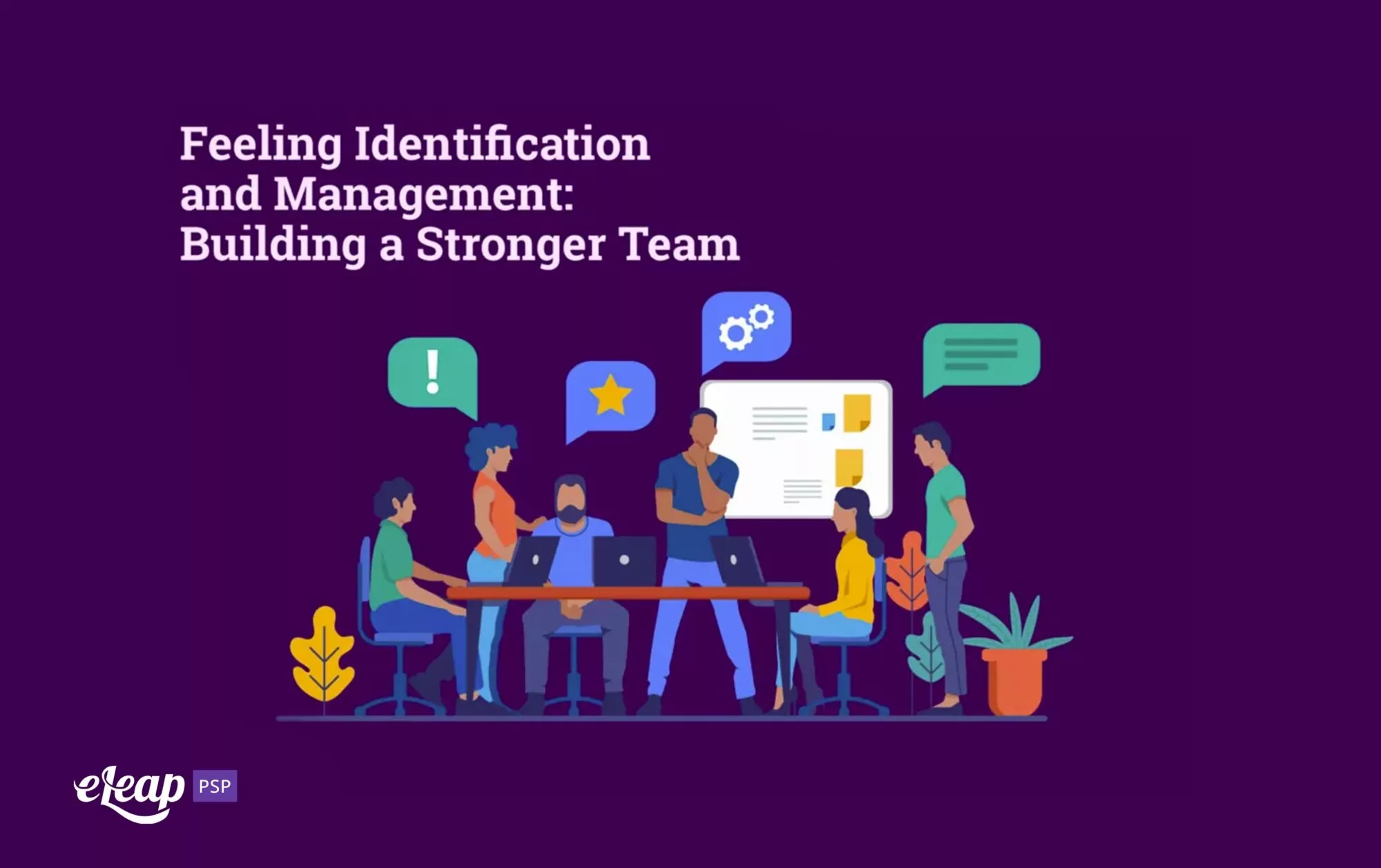Feeling Identification and Management: Building a Stronger Team

We tend to think of hard skills when we picture the ingredients that go into making a good manager. While those are important, they’re not the entire picture. In fact, the best managers are as in touch with their emotional side as they are with their analytical side. Building a strong management team capable of increasing employee performance requires that you invest time and effort into improving resilience and strength. It requires mastering feeling identification. See our list of skills development courses available to you right now.

What Is Feeling Identification?
Feeling identification is nothing more or less than being able to name how you are feeling at a specific moment. Are you happy? Excited? Worried? Sad? Angry? It’s more complicated than you might think. It also bears more on performance and organizational culture than you might realize.
Being able to name how you’re feeling at a particular moment doesn’t come easily. It’s not a skill that you’ll develop overnight, either. It’s something that requires intentionality, commitment, and the ability to be deeply introspective. It’s a lifetime pursuit that yields powerful dividends, including improved resilience.
Why Does Resilience Matter?
Let’s take a moment to consider resilience and its impact on an individual. Merriam-Webster defines it as “an ability to recover from or adjust easily to misfortune or change.” Simply put, it’s our ability to “bounce back” when something unexpected or unfortunate happens.
We see resilience every day in athletes at all levels. They put their body through incredible punishments, yet they can come back day after day, not just surviving but thriving. Resilience is as much a mental skill as it is a physical capability, though.
For instance, refugees from war-torn nations often display incredible resilience, going from homeless, stateless persons to happy, contributing members of new societies. Rather than letting the horrors they’ve experienced in the past hold them back, they make new friends, learn new skills, and thrive.
That ability to bounce back from disaster or change and thrive in a new environment is exactly what feeling identification is important in your business. After all, who wouldn’t want a business culture that emphasizes resilience and gives employees the tools they need to survive and thrive?
How Does Feeling Identification Improve Resilience?
The obvious question at this point is how does feeling identification improve resilience? And how does that help make managers better at coaching and supporting their people? It comes down to understanding your emotional state and using that understanding to reduce the impact of negative emotions and increase the effect of positive ones. This is called “emotional granularity,” and it comes down to this:
Being able to make granular distinctions between similar emotions.
For instance, you might think, “I’m happy,” but what you’re experiencing is joy. You might think, “I’m unhappy today,” but you’re feeling sadness. By identifying your emotion, you can then explore why you might be feeling it.
For example, a sense of sadness might translate as unhappiness, but when you delve down into it, you find that the sadness is stemming from the surfacing of a memory from your childhood and has nothing to do with your present situation. By understanding this, you can then take intentional action to change your emotional state to something more positive, enabling you to be more supportive of your team.
This has obvious implications for the traditional workplace, but it can have even more ramifications when it comes to remote teams. As remote work continues to be the norm rather than the exception, thanks to COVID-19, managers are finding it more and more challenging to identify their team members’ emotions and take appropriate action to support positive outcomes. Feeling identification can hone your ability to identify your own emotions, and that carries over to people with whom you interact, even if on a virtual basis.
In a remote-work situation, a direct report displaying signs of anxiousness may not be uneasy about anything to do with work. It could very easily be something to do with their personal life. With everyone spending more and more time at home, this is increasingly likely. However, with feeling identification, you can help that team member regulate their emotions and improve their situation. See how the eLeaP system can help. Create your free trial today.
Helping Remote Workers Identify, Control, and Regulate Emotions
Humans are emotional creatures. There’s no way to throw a switch and turn them off, as nice as that might be sometimes. However, you can help your employees identify, control, and then regulate their emotions, even in remote work.
A simple, four-step process can help to change the paradigm for team members caught in a vortex of negative emotions:
- Name the emotion. Identifying what they’re feeling helps them to control it. Label anxiety as anxiety, for instance.
- Change the view. Changing how people look at a situation changes the situation itself. For instance, instead of self-isolation, look at it as increased family time. Turn a negative into a positive.
- Change the focus. Negative emotions are strengthened when we focus on them, so find ways to redirect attention toward more positive things. Set goals that help reframe focus.
- Ameliorate the situation. Find a positive emotion to focus on to protect against the damage negative ones can cause.
Creating a Culture of Resilience
Successful managers can identify their own emotions and take proactive steps to improve things. They’re also able to help their team members identify what they’re feeling and make positive changes. This goes so far as telling employees what you’re feeling during a one-on-one meeting.
Sharing your emotional state helps forge trust and respect and tells a team member they’re not alone. It creates a safe environment where team members feel able to be honest, and communicate directly.
With that being said, feeling identification can be incredibly challenging. We can experience over two-dozen emotions, and identifying even a fraction of those is hard. Commit to feeling identification and use intentionality to help improve your emotional and mental state, to guide your team, and build a culture of resilience.